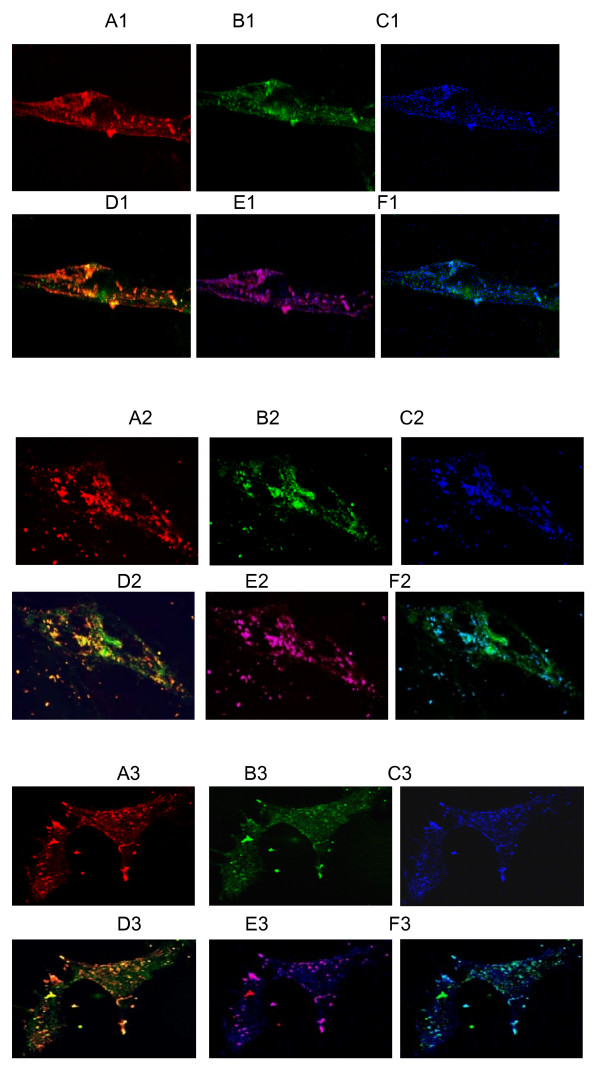Figure 4.
Separation of the drug carrier molecule in DDV and its translocation into neuronal cytosol is cell maturation dependent. The figure shows fluorescent images of mouse spinal cord neurons. Cells at different stages of culture were incubated for 16 h with 200 nM solutions of fluorescently labeled DDV, and then labeled with anti-endosome antibody as described under methods. Confocal images shown are as follows: A1-A3, red-rHC; B1-B3, green-OG488-dextran; C1-C3, bright blue-Alexa 633-endosomes; D1-D3, overlay of red and green showing either co-localization (orange) or separation of rHC and dextran; E1-E3, overlay of red and blue showing either the localization (magenta) of rHC in the endosomes or its release into the cytosol, if any; F1-F3, overlay of green and blue showing either localization (light blue or greenish blue) of dextran in the endosomes or its release into the cytosol. The numerical suffixes as in A1, A2 and A3 indicate culture age, i.e., one- (top panels), two- (middle panels) or three-week (bottom panels) old. The results clearly demonstrated that the rHC component of the DDV remained localized in the endosomes, while the OG488-dextran separated from the DDV and migrated into the cytosol.

